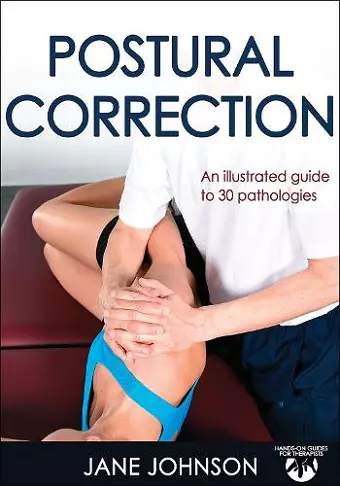Postural Correction
Format:Paperback
Publisher:Human Kinetics Publishers
Published:3rd Nov '15
Should be back in stock very soon

Featured at various sport medicine events throughout the UK and Europe including Physio First Conference and Physio. Reviews in UK and European websites, magazines and journals including international Therapist, Frontiine, Yoga Magazine and Pilates Magazine. Author webinar. Solus emails, inclusion in online newsletters and posted on Human Kinetics' Health and Fitness Blog.
Postural Correction presents 30 of the most commonly occurring postural conditions in a comprehensive, full-color format and provides hands-on therapists and body workers with the knowledge and resources to help clients address their malalignments.
Postural Correction presents 30 of the most commonly occurring postural conditions in a comprehensive format, providing hands-on therapists and body workers the knowledge and resources to help clients address their malalignments. Focusing on treatment rather than assessment, it takes a direct approach and applies specific techniques to improve posture from an anatomical rather than aesthetic perspective.
Primarily concerned with the lengthening of shortened tissues to help realign body parts, Postural Correction offers a collective approach to remedying malalignment. Techniques vary for each posture correction, including deep tissue massage, simple passive stretches, soft tissue release, common trigger points, and gentle limb traction. Because weak or poorly functioning muscles may contribute to postural problems, the text notes what muscles need to be strengthened and includes recommendations on techniques. Suggestions also are made for those postures that are difficult to correct with hands-on techniques, such as scoliosis, genu valgum (knock knees), and genu varum (bow legs).
Recognizing that the work clients can carry out independently is a crucial component of long-term postural correction, this guide includes information on how clients can continue their therapy independently between or at the conclusion of their therapy sessions. Therapists can take these techniques and recommendations to advise, educate, and guide clients in their efforts. Much attention is paid to lifestyle, activities, and habitual use or resting of a body part that may have led to the initial pain and malalignment.
Structured by anatomical regions of the body to make accessing information quick and easy, Postural Correction tackles postural concerns commonly affecting the spine; pelvis; upper limbs, including the shoulder and elbow; and lower limbs, including the hip, knee, ankle, and foot. Examples from various sports and demographics such as the elderly offer contextual and applied value. Descriptions avoid biomechanical jargon and instead focus on simple, clear explanations. Information is also included for when hands-on techniques are limited in correcting a particular posture.
Special features make this book unique and useful:
• Full-color anatomical illustrations and photographs present a clear visual of what will help bring about postural change.
• Consistency with the other titles...
“An ideal instruction reference for students, therapists, and the non-specialist reader with an interest in postural correction issues. “Postural Correction” is as informative and educational as it is thoroughly ‘user friendly’ in content, tone, organization and presentation. “Postural Correction” is very highly recommended for professional, community, and academic library Health/Medicine instructional reference collections.”
--The Midwest Book Review
“Therapists will use different techniques for different clients and this book helps guide them through the possibilities. It also helps therapists think outside the box and approach clients in a different way, if one technique is not working. The photographs are very helpful… Having a book like this will help therapists take the skills they already have and apply some new theory and techniques to help their clients. The book is written at an appropriate level, not going into too much scientific detail that might be beyond the needs of some massage therapists. Yet, it still challenges therapists to approach their treatments differently.”
--Doody’s Book Review
ISBN: 9781492507123
Dimensions: unknown
Weight: 544g
232 pages